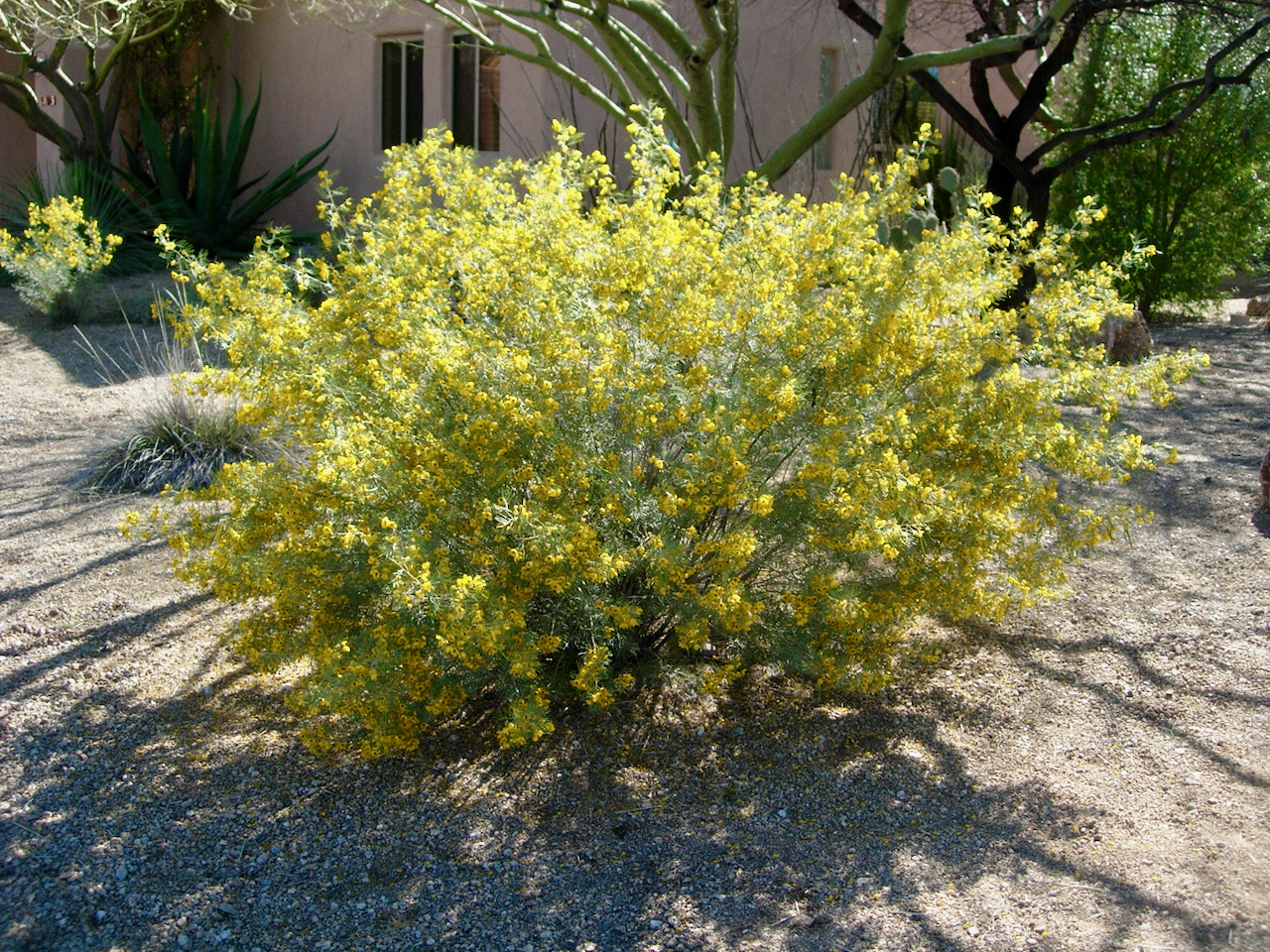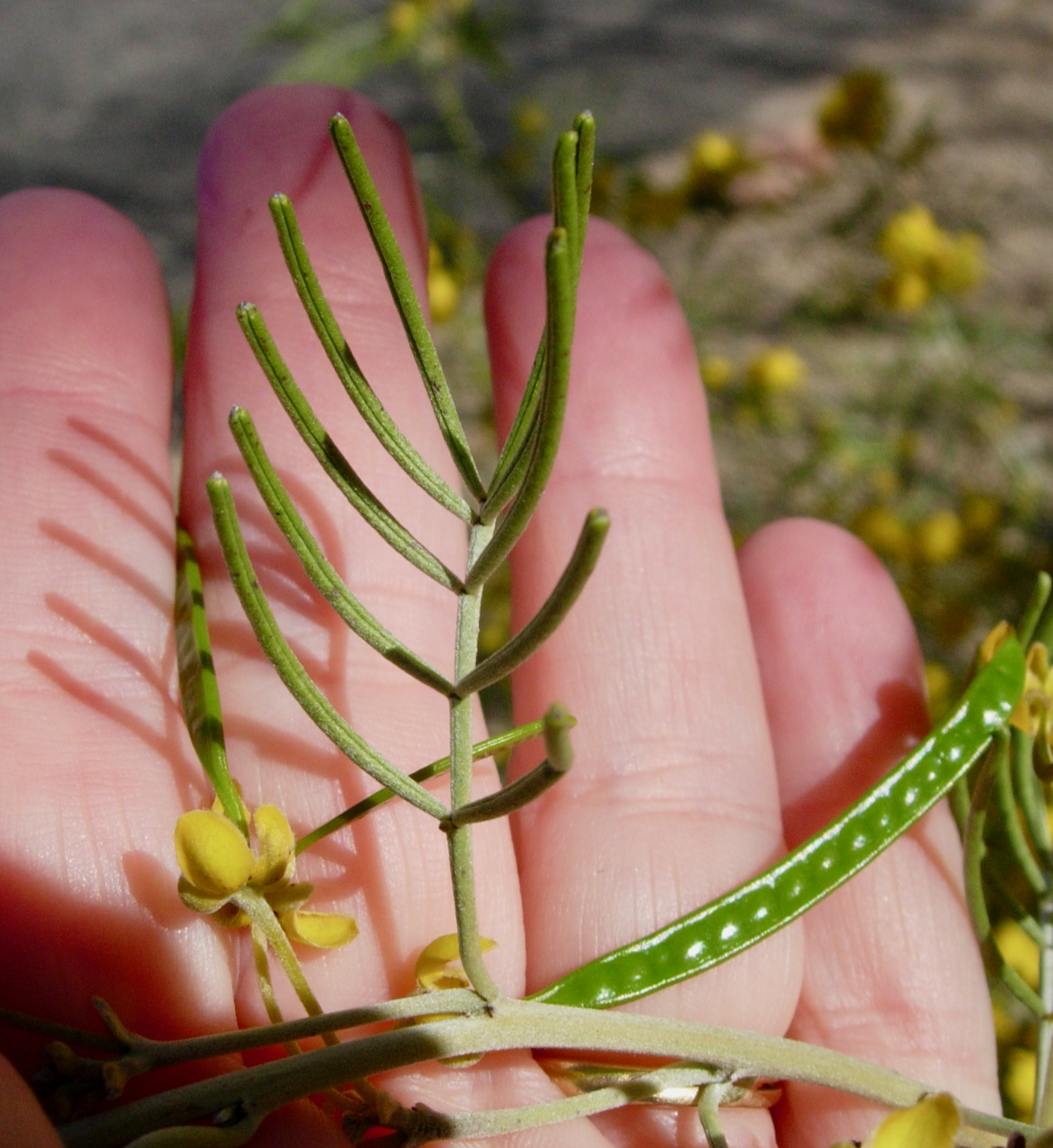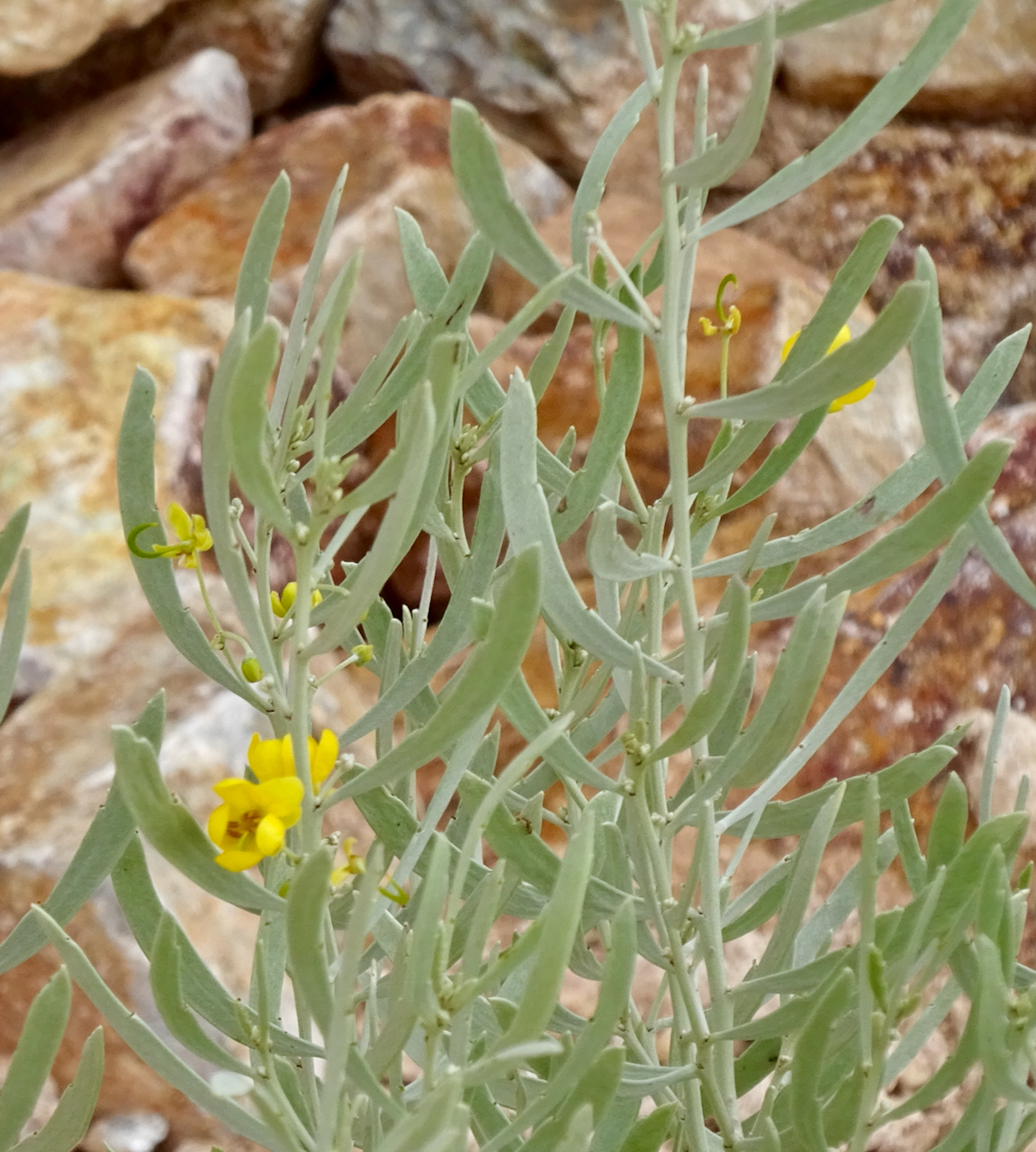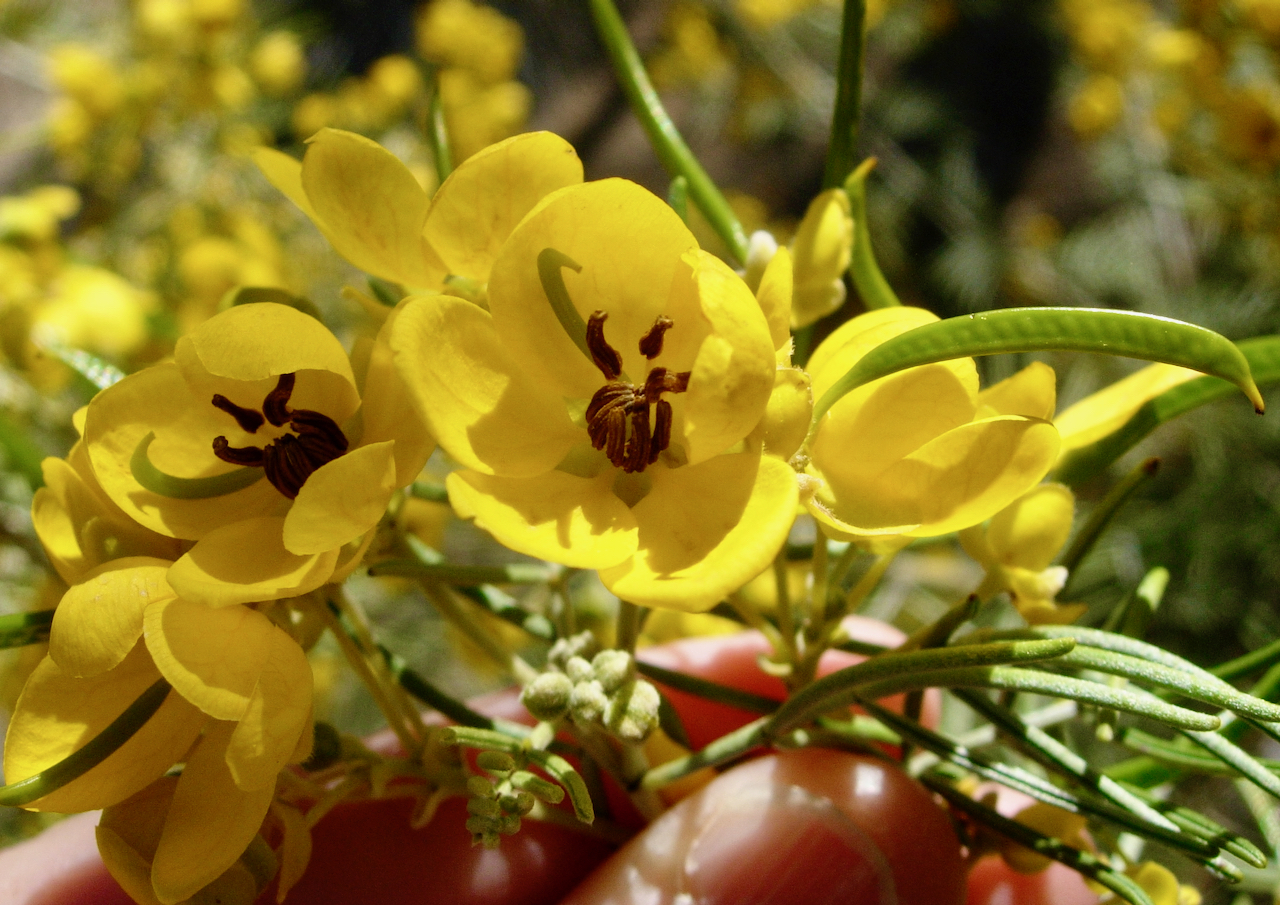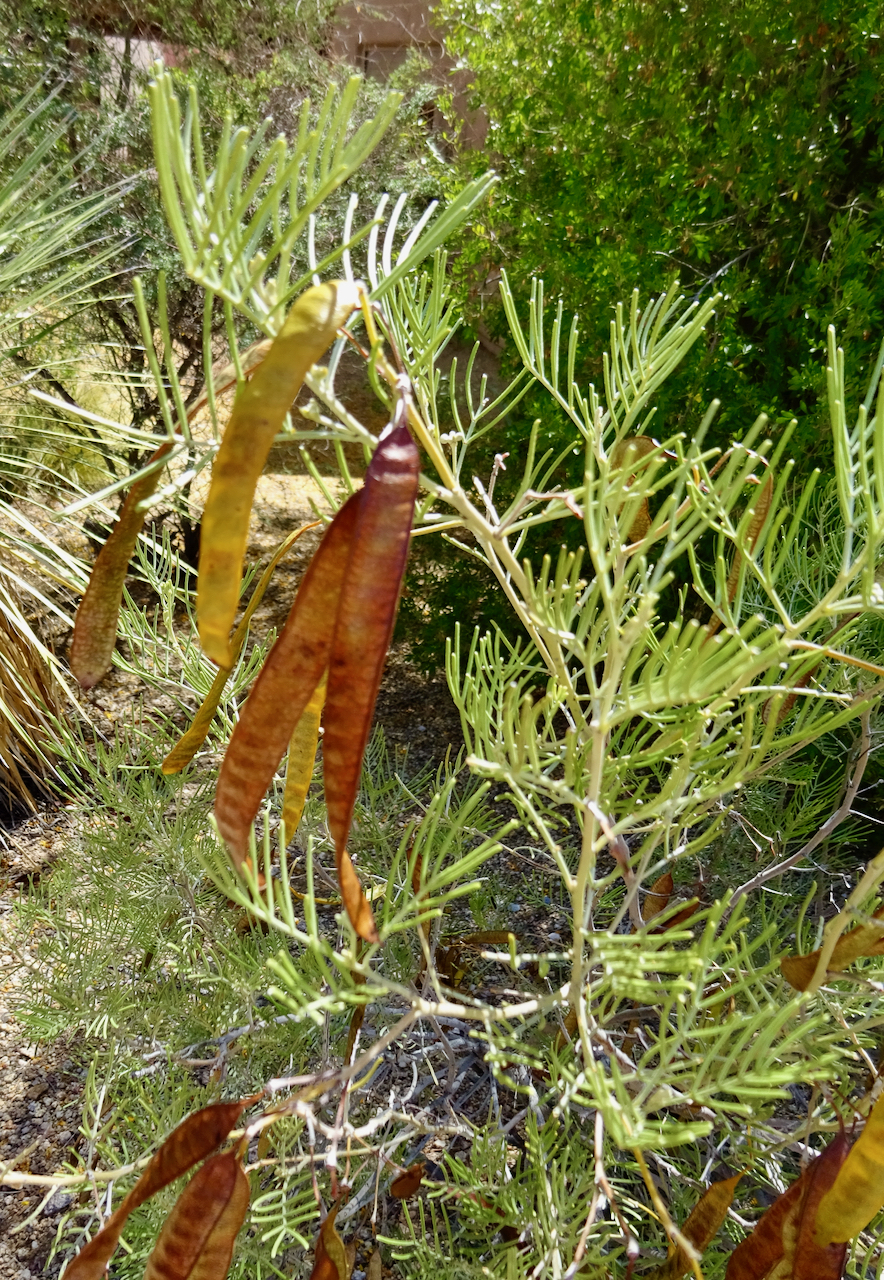Australian Sennas
Senna artemisioides
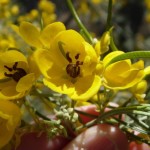
About the Plant
This plant in potentially invasive!
Everyone appreciates a plant that flowers in winter. A native of Australia, these sennas are evergreen shrubs with showy, lightly fragrant yellow flowers in very early spring. Unfortunately, Australian senna, sometimes known as feathery cassia, also produces lots of seeds and there are indications it can reseed aggressively. This reseeding can be controlled in a landscape environment, but that is not true in natural areas. If you live in the suburbs, near natural areas such as Saguaro National Park, this species should be avoided.
Should you decide to grow Australian sennas, plant them in full sun. Once established they can survive on natural rainfall. Correct pruning is critical. The flower buds form in August to open in spring. Any pruning after August will cut off those buds, reducing the ornamental value of the plant. Instead, please prune in late spring after flowering has finished. Most importantly, pruning immediately after flowering will remove the unsightly pods and prevent reseeding.
More Information:
Weekly Plant on Australian sennas (as feathery cassia)
Horticultural information from ASU showing different leaf forms: subsp. artemisioides, subsp. filifolia, subsp. oligophylla, subsp. petiolaris, subsp. x sturtii.
In books:
Trees and Shrubs for the Southwest by Mary Irish, page 285.
ID Characteristics
This plant is in the Fabaceae - the legume (pea and bean) family.
Though Australian sennas can be pruned to a smaller size, this is a shrub that can grow to 5 feet, even taller, and just as wide. It has an open, rounded form. All pruning should be done after flowering in late spring. Pruning in late fall removes the flower buds and results in a plant with no or only sporadic flowers.
The alternate leaves of Australian sennas vary with subspecies. The leaves of subsp. artemisioides and filifolia have several thin leaflets, each about an inch long.
Subspecies petiolaris has flattened leaves, often curved upward and lacking leaflets.
The yellow flowers are slightly irregular and about an inch wide. There are 5 rounded petals. The green "pea pod" forms quickly after pollination.
The pea pods quickly grow to about 4 inches in length, green initially and then dark brown with age. Fruit set is usually heavy, creating a plant that has lost its grace and appeal. Once the flowers finish, prune the plant gently to remove the seed pods and shape the plant.
